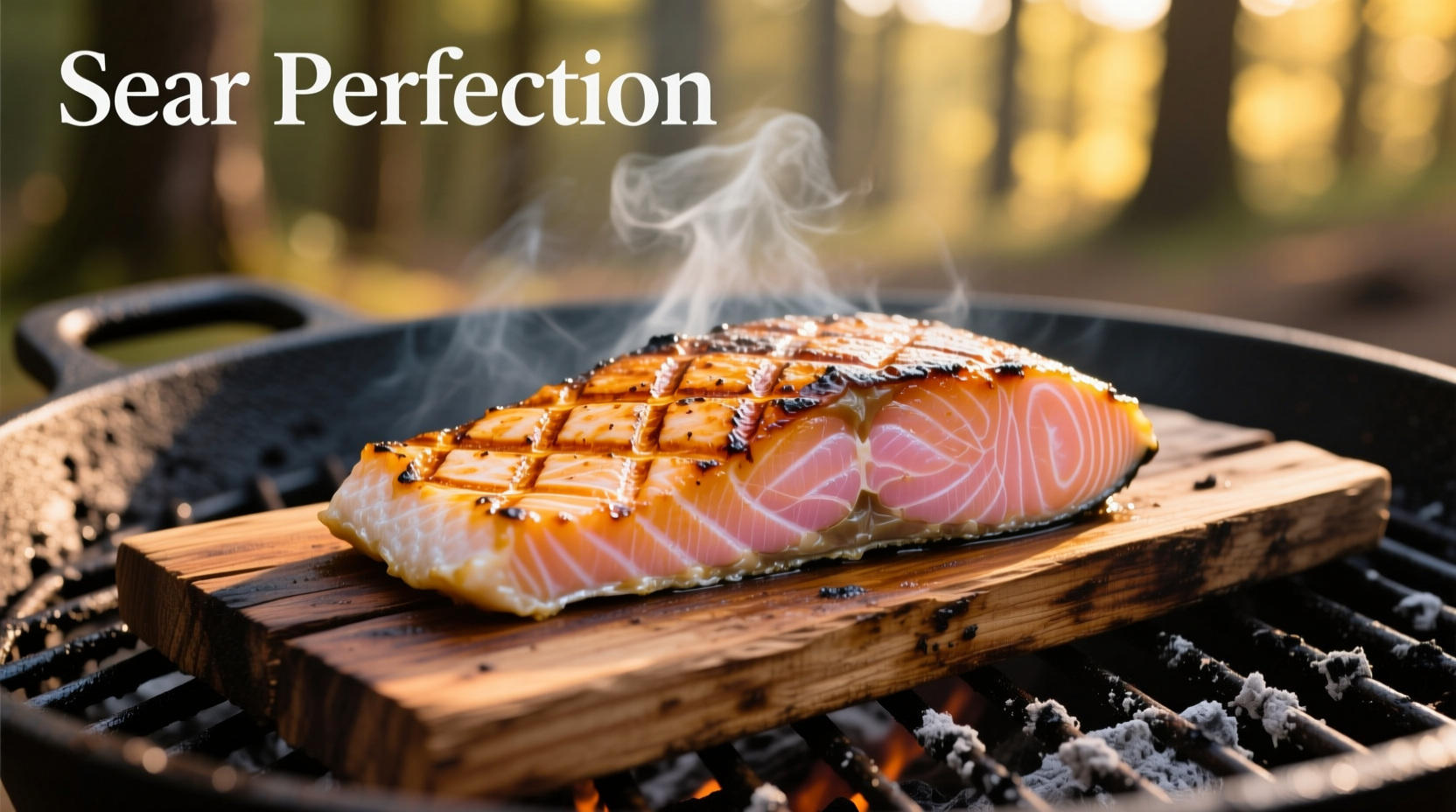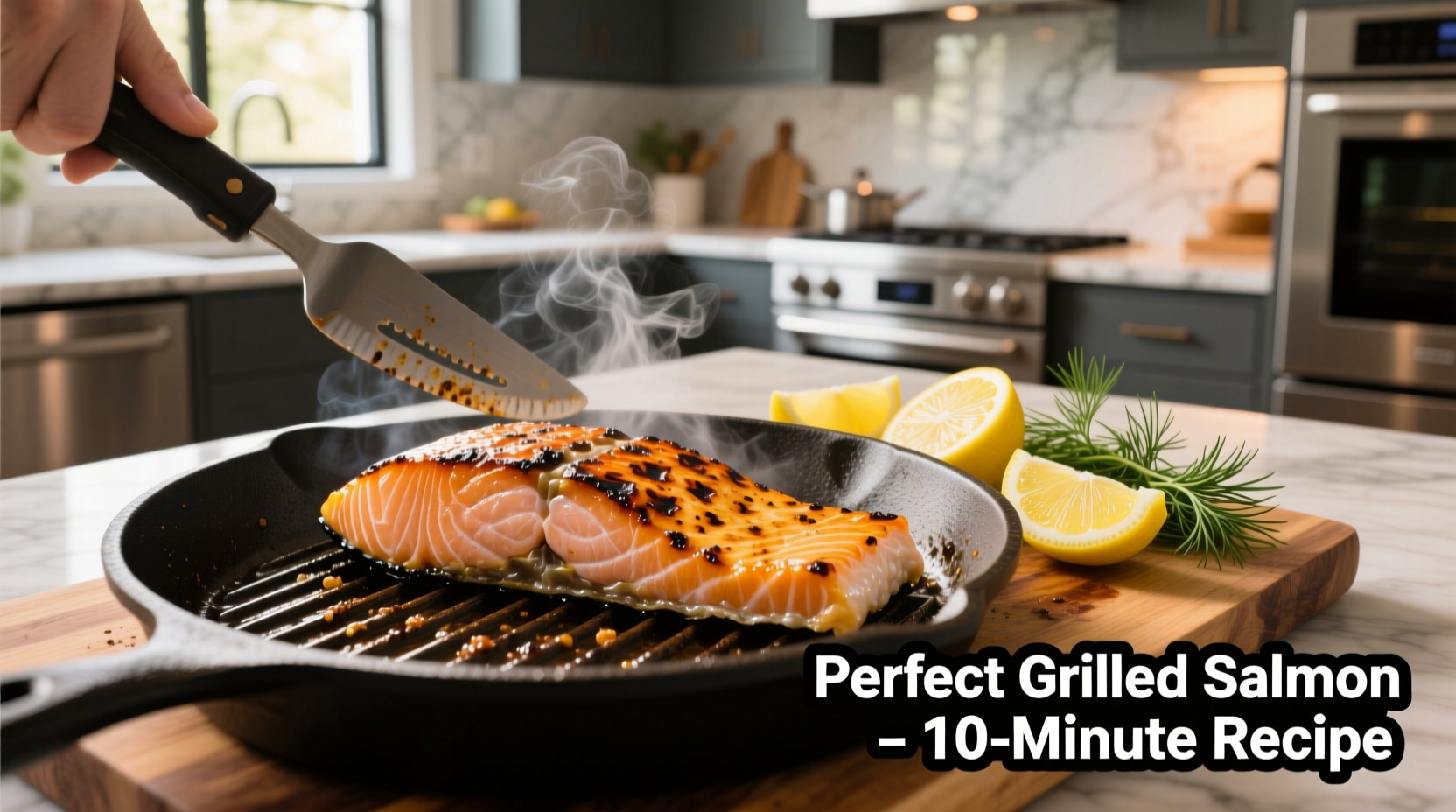Grilling salmon transforms this delicate fish into a flavorful centerpiece with beautiful sear marks and a smoky aroma that elevates its natural richness. Whether you're using a gas grill, charcoal setup, or pellet smoker, mastering grilled salmon ensures restaurant-quality results at home every time.
Why Grilled Salmon Deserves a Spot on Your Menu
Salmon's natural oil content makes it uniquely suited for grilling compared to other fish varieties. The fat protects the flesh from drying out while absorbing smoky flavors. According to the FDA's grilling safety guidelines, properly grilled salmon reaches safe internal temperatures while maintaining moisture and texture that other cooking methods often compromise.
Pre-Grill Preparation: Setting Yourself Up for Success
Selecting quality salmon begins with looking for firm flesh that springs back when pressed, with no brown spots or fishy odor. Wild-caught salmon typically has a deeper red color and leaner profile than farm-raised varieties. For grilling, choose center-cut portions at least 1.5 inches thick to prevent overcooking.
Patience pays off with proper drying - thoroughly pat both sides with paper towels before seasoning. Moisture is the enemy of perfect grill marks. Let the fish sit at room temperature for 15-20 minutes before grilling to ensure even cooking.
Seasoning strategy should enhance, not overwhelm. A simple combination of olive oil, salt, and freshly cracked pepper works wonders. For more complex flavor, try our recommended grill-ready salmon rub:
- 1 tablespoon olive oil (creates protective barrier)
- 1 teaspoon kosher salt (penetrates better than table salt)
- 1 teaspoon freshly cracked black pepper
- 1/2 teaspoon garlic powder (dissolves better than fresh when grilling)
- 1/4 teaspoon smoked paprika (adds subtle depth)
| Grilling Method | Temperature Range | Cooking Time (1.5" thick) | Best For |
|---|---|---|---|
| Gas Grill | 375-400°F | 8-12 minutes total | Beginners, consistent results |
| Charcoal Grill | Medium heat (you can hold hand 4-5 sec) | 7-10 minutes total | Smoky flavor enthusiasts |
| Pellet Smoker | 350-375°F | 10-14 minutes total | Low-and-slow cooking |
Mastering the Grill Setup
Two-zone fire configuration is essential for successful salmon grilling. For gas grills, turn on only one side of the burners. For charcoal, pile coals on one side of the grill. This creates both direct heat (for searing) and indirect heat (for finishing without burning).
Temperature control makes the difference between perfect and problematic salmon. The ideal grilling temperature for salmon ranges between 375-400°F. Higher temperatures cause the skin to burn before the center cooks, while lower temperatures lead to sticking and steaming rather than searing.
Preventing sticking requires a three-pronged approach:
- Clean the grates thoroughly with a brass brush
- Oil the grates using tongs and a folded paper towel dipped in high-smoke-point oil
- Oil the fish skin generously before placing on the grill

The Grilling Process: Step-by-Step
Step 1: Skin-side placement - Always place salmon skin-side down first. The skin acts as a protective barrier and will naturally release from the grates when properly seared (typically after 6-8 minutes).
Step 2: Resist the urge to move - Let the salmon cook undisturbed for at least 5 minutes. Moving too soon causes tearing and sticking. The fish will naturally release when ready to flip.
Step 3: Strategic flipping - Use a thin, flexible metal spatula to gently lift and flip the salmon. Cook flesh-side down for just 2-4 minutes, depending on thickness. For extra protection against sticking, consider using a fish spatula with thin, wide blade.
Step 4: Doneness check - The FDA recommends cooking salmon to an internal temperature of 145°F, measured in the thickest part. Alternatively, look for the flesh to turn opaque and flake easily with a fork. Never press down on the salmon while cooking - this squeezes out precious oils and dries out the fish.
Contextual Considerations: When Techniques Work Best
Understanding the limitations of grilling methods prevents common frustrations. Thin salmon fillets (under 1 inch) often work better with cedar planks or foil packets to prevent overcooking. During extremely hot days (above 90°F), reduce grill temperature by 25°F to compensate for ambient heat.
For skinless fillets, the National Center for Home Food Preservation recommends using a fish basket or aluminum foil with holes punched through to ensure proper air circulation while preventing sticking.
Serving and Troubleshooting
Resting time of 3-5 minutes allows juices to redistribute. Serve with lemon wedges and fresh herbs like dill or parsley. Pair with grilled asparagus or a light cucumber salad for a complete meal.
Common issues and solutions:
- Sticking fish - Inadequate preheating or insufficient oiling. Solution: Ensure grill is properly preheated and both grates and fish are well-oiled.
- Dry salmon - Overcooking or too-high heat. Solution: Use a thermometer and remove at 140°F (carryover cooking will reach 145°F).
- Burning skin - Temperature too high. Solution: Create two-zone fire and move to indirect heat if skin darkens too quickly.
Perfect Grilled Salmon: Key Takeaways
Mastering grilled salmon requires attention to temperature control, proper preparation, and understanding the fish's behavior on the grill. By following these science-backed techniques, you'll consistently achieve restaurant-quality results with beautiful presentation and perfect texture. Remember that salmon continues cooking after removal from heat, so pull it slightly before reaching your target temperature.











 浙公网安备
33010002000092号
浙公网安备
33010002000092号 浙B2-20120091-4
浙B2-20120091-4